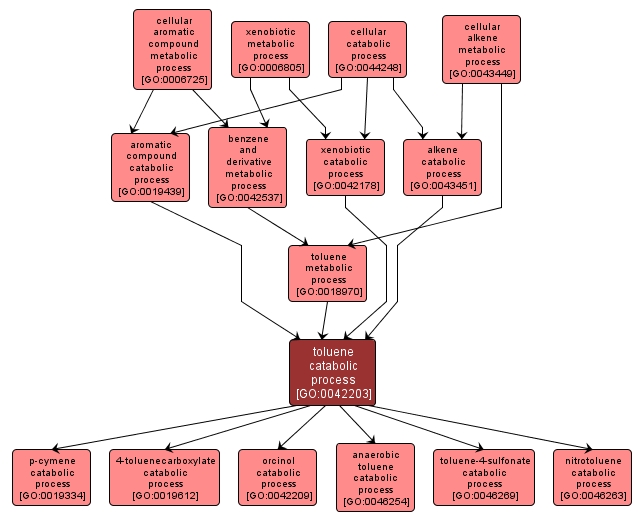GO TERM SUMMARY
|
| Name: |
toluene catabolic process |
| Acc: |
GO:0042203 |
| Aspect: |
Biological Process |
| Desc: |
The chemical reactions and pathways resulting in the breakdown of toluene, a volatile monoaromatic hydrocarbon found in crude petroleum and petroleum products. |
Synonyms:
- toluene breakdown
- toluene catabolism
- toluene degradation
|
|

|
INTERACTIVE GO GRAPH
|














